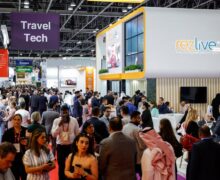Five challenges confronting Meetings Industry in 2019

Tight meeting budgets, time pressures, organizational issues, a lack of creativity from hotels, increasingly complex and costly mandates in catering, a need for more dynamic and enriching experiences and resistance to change – these are among the major challenges confronting the meetings industry in 2019.Teneo Hospitality Group surveyed 150 meeting planners and hoteliers on the challenges they faced in effectively competing in today’s changing and complicated marketplace. Interestingly, some of the challenges planners faced are internal, within their own organizations. All identified limited meetings budgets, lack of time and somewhat inflexible corporate cultures that gave rise to additional problems such as a lack of innovation and poor cost control.
“‘Many of these challenges – and their solutions – are interdependent,” says Teneo President Mike Schugt. He notes that meeting professionals are saying that they have concerns within their organization and corporate cultures which contribute to resistance to change, resulting in budgets that are impacted negatively. Planners are also saying that these challenges, coupled with the many demands on time, inhibit creative strategies that could otherwise help solve the obstacles pointed out in Teneo’s most recent survey.
“Teneo and its hotel and DMC members have a unique opportunity to step up and help solve the challenges of our planner partners,” says Mike Schugt. “We can introduce creative, time-saving offerings that can also meet their bottom line. By understanding the needs that go beyond rates, dates and space, hotels can provide innovative, solutions to the challenges planners face behind the scenes.”
Challenge #1 Budgets. Inadequate budgets headed the challenge lists for all survey participants. Planners cited rising costs, especially concerning food and beverage, with no comparable increase in budgets. The complexities of gaining budget increases from various corporate departments impact every aspect of the meeting process from training staff to negotiating contracts. Despite a strong economy, some planners reported budget cuts. Respondents noted that the inability to obtain adequate funding reflected a lack of understanding of the profound changes in the meetings industry that demanded more, not less, investment. Needs of attendees are very different today, especially among Millennials and Generation Z who require a high degree of technical services, greater engagement and entertaining activities – needs that are difficult to meet on a tight budget. Yet management and attendees had extremely high expectations.
Suggested Solution: The fundamental way planners can achieve their budget is to be transparent and in open communication with a property. Though the tendency may be to play one’s cards close to the vest, transparency from the beginning of negotiations is key to effective planning and keeping costs in check. While many planners feel they must keep back some of their budgetary concerns until further on in the planning process, an honest and comprehensive view of the meetings objectives and resources will enable hoteliers to present a realistic budget.
Challenge #2 Lack of Time. Time pressures impact every business and organization, but some concerns have particular ramifications for the meetings industry. Virtually all respondents cited a lack of time and identified challenges that could have far-reaching consequences. With sweeping advances in technology impacting the industry, hoteliers and planners noted that they often lacked the time to keep up with technical developments. This problem was amplified when attendees were ahead of the planners and hotels in their own use of technology. Training a new generation of meeting planners and hotel staff is key to the industry’s progress. But few had time to develop effective programs, tailored to meet the different viewpoints and technical skills of a new generation. Most significantly, respondents worried that the overwhelming details of day-to-day work left little time for long-term, strategic planning. And the top time waster? Too many unnecessary e-mails.
Suggested Solution: Hotels are often inundated with leads and may not always be able to reply in 24 hours. Planners are encouraged to indicate their timeline for response up front so hotels and resorts can offer a higher quality of response. For planners, they can then gather their lead responses all at one time and be assured that the quality of response is going to be higher if a little more time is allocated to the properties of interest. Planners that source more than 6 or 7 hotels per lead and in multiple cities will tend to be taken less seriously by a hotel. So planners can save time and drive up quality of response by reducing the number of hotel sources they contact.
If planners can share flexibility with dates early in the process, they will save time and the hotels can provide multiple options, which will likely have differences in pricing leading to greater value with the budget. Giving the hotel as much information as possible saves everyone time and can save on the budget.
Challenge #3 Keeping Up with Technology. In a technological environment that is moving at lightning speed, staying current and knowledgeable of technology’s impact on meeting productivity can be daunting. Realizing that millennial attendees may be way ahead in their technical knowledge, technology applications and expectations can be intimidating. Even leadership within select organizations don’t always seem to grasp how technology is revolutionizing the meetings experience today.
Suggested Solution: Staying current and out front with technological progress is critical to the successful outcome of every meeting, conference or social gathering. Yes, some long-term practices are still prized such as white boards and LCD players. But engaging with attendee devices puts the meeting’s learning literally in the hands of conferees in a way that resonates within a generation who grew up on texting, social media posts, interactive apps and more. These are the tools they use for their everyday living, and should be the tools they can expect to use within meetings important to their and their employer’s success.
Challenge #4 Lack of Creativity. Big brand hotels’ corporate bureaucracy partially accounts for planners’ demand for greater creativity in the meeting process, and a far more flexible business environment. Larger hotel brands often have corporate policies that may place limits on pushing the boundaries of creating the ultimate meeting experiences for planners. But the need for innovation and original events, imaginative use of technology, effective teambuilding exercises, new experiences in even the most tried and true destinations, and diverse, sustainable and healthy food cannot be ignored.
Suggested Solution: Partner with a hotel or resort that creatively works with planners and groups to construct a meeting itinerary customized to a specific group and set of meeting objectives. Independent and small brand properties, by the very nature of their independence, have proven to be expert in creatively discovering and helping plan for achieving meeting goals of professional planners and groups, doing so with out-of-the-box thinking, highly unique group initiatives, and far from run-of-the-mill teambuilding programming. Private destination management companies can also be an important resource, and Teneo suggests partnering with them to help make a city or destination come alive for meeting guests by maximizing local resources and attractions in a way that is meaningful to the group.
Challenge #5 Increasing Complexity and Rising Costs of Food & Beverage. As the population becomes more diverse, food preferences and dietary requirements have become more complicated. Growing awareness of wellness and sustainability issues add to a mix that could become more problematic and costlier. Paleo, keto, pescatarian, vegan and religious dietary requests are among the newest trends in conference dining in 2019. Respondents also called for better management of food ordering to keep costs down and eliminate waste.
Suggested Solution: This is an area where independent and small-brand hotels can get ultra-creative for the planner as they are in a more entrepreneurial and creative mode, less restricted by big-brand requirements and constraints. They can typically offer a more creative product with reduced costs. By working with chefs and banquet managers from these properties at the beginning of the planning process and being candid about budget constraints, it’s possible to obtain serious savings on food and beverage while achieving maximum creativity.
source: eTN




